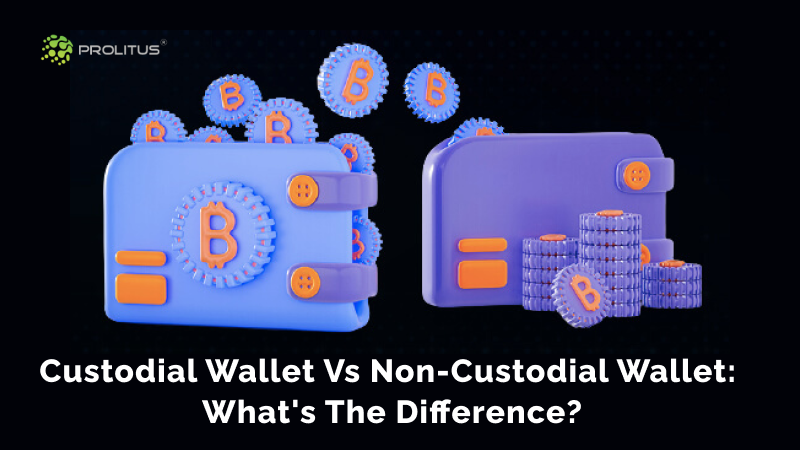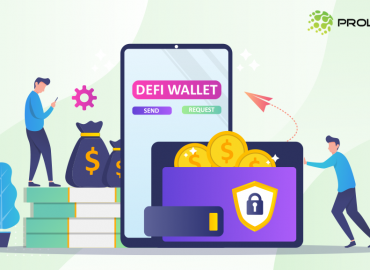Crypto wallets are software programs that allow you to store your cryptocurrencies offline in a secure manner. Your private keys and public keys are both necessary in order to access your cryptocurrencies. A crypto wallet can be accessed from any computer or mobile device with internet access, making it the perfect choice for day-to-day use. Two of the most popular types of crypto wallets are desktop wallets and web wallets. Desktop wallets are installed on your computer and work like regular wallets, but they offer more security as they’re stored on your personal computer. Web wallets are hosted by an online service and can be accessed from anywhere with internet access. They’re less secure as they’re not stored on your personal computer, but they’re easier to use and more convenient than desktop wallets.
Crypto wallets can further be categorized as custodial or non-custodial wallets. These two wallets are quite popular among users, but both have certain limitations and benefits. A custodial wallet is a digital wallet that stores the user’s cryptocurrencies and other assets. A noncustodial wallet, on the other hand, does not store cryptocurrencies or other assets.
In addition to understanding the advantages of these wallets for businesses and users, blockchain app developers and business owners, like incorporating them into business operations, many are also interested in how these emerging technologies work and how they can be used for better opportunities.
What are custodial wallets?
Custodial wallets are a type of digital wallet where users keep their private keys offline. In contrast, traditional digital wallets like Apple Pay store user data online and require users to enter their passwords to access their funds.
A custodian is a third party that holds the user’s private keys and acts as a custodian wallet provider. A few popular custodian wallet providers include Coinbase, BitGo, and Ledger.
When using a custodian wallet, the user needs to create a new address for each purchase they make. This is because the custodian will not hold the user’s funds – they will only act as a safekeeping service. The main benefit of using a custodian wallet is that it preserves user privacy.
What are the pros and cons of custodial wallets?
As was previously said, the most significant drawback of using custodial wallets is that you are required to entrust a third party with custody of both your assets and your private keys. Verification of one’s identity is going to be necessary from these service providers almost always (KYC). The advantage, on the other hand, is the ease and tranquility of the situation. You won’t need to be concerned about losing your private key, and if you run into any problems, you can get in touch with customer service.
When employing the services of a custodian, it is imperative that you select a trustworthy business that provides a high level of security as well as insurance protection. Watch out for guardians who aren’t regulated or in compliance with the rules.
Some cryptocurrency custodians have additional standards, and it’s possible that you won’t meet all of them. For example, Binance Custody is a custodial service provider, although at the moment they exclusively onboard business users.
What are the non -custodial wallets?
A non custodial wallet is a type of digital wallet that does not require the user to deposit their coins into a third-party custodial wallet. This allows users to maintain greater control over their private keys and security, as well as privacy. An example of a non custodial wallet is the MyEtherWallet.com website.
What are the pros and cons of non-custodial wallets?
Non-custodial wallets provide you with complete control over your private keys and the funds in your wallet because they do not involve a third party. In other words, your assets are completely under your control, and you have the ability to act as your own bank. In addition, non-custodial transactions tend to be completed more quickly because there is no need to wait for the permission of withdrawals. Finally, not having a custodian means you won’t have to pay any additional custodial fees, which, depending on the service provider you go with, might be quite pricey.
As we’ve seen, one of the drawbacks of utilizing non-custodial wallets is that they are more difficult to access and utilize than custodial wallets. They are typically less user-friendly and have a tendency to present a challenge to individuals who are holding cryptocurrency for the first time. In the future, this issue needs to be remedied as a result of the development of service providers who do not supply custody services.
Managing your keys comes with its own share of responsibilities, first among which is the obligation to exercise your own discretion and caution at all times. This indicates that you need to put your faith in yourself to manage your money rather than putting it in the hands of another person.
You should take into consideration the following security steps in order to safeguard your crypto and protect yourself from cybercriminals:
- using a password that is very secure.
- Enabling two-factor authentication (also known as 2FA) is a good way to add an extra layer of security to your account.
- Maintaining a state of vigilance in the face of phishing and other cons.
- When clicking links and downloading new software, exercising extreme caution is essential.
Custodial vs. Non-Custodial Wallets: How are they different?
When you first start buying cryptocurrencies, it might be a difficult decision to make whether to store your coins in a wallet that is custodial or one that is not custodial. Let’s take a look at the key differences between custodial and non-custodial wallets so that you know when to go with one over the other.
Obtaining access to the secret key
When deciding between a custodial and non-custodial wallet, the user should give primary consideration to the question of who has access to the private keys of the wallet. A custodial wallet is one in which the custodian is responsible for storing your assets. This indicates that the centralized authority will now have complete control over the private key of the wallet.
In contrast, a non-custodial wallet takes a decentralized method of storing digital currency. It wrests control away from any and all centralized authorities and places it squarely in the hands of the users. Therefore, if you do not want a third party to be able to access your assets, you should consider the idea of going for a wallet that does not provide custody services.
Backup and restoration of monetary resources
The custodian has access to the private keys of the wallet that they are responsible for. Because of this, it is possible to retrieve the data even if the keys are misplaced by asking a third party for assistance.
On the other hand, if you lose the keys to your non-custodial wallet, you will no longer have access to the money it contains. This is due to the fact that the owner possesses complete and total control over his private keys as well as his assets.
Security
When contrasting custodial wallets with non-custodial wallets, the level of security offered by each type of wallet is an additional crucial aspect to take into consideration. Custodial wallets hold all sensitive data in hot and cold storage, both of which frequently open themselves up to the risk of being compromised by hackers. In most cases, this is determined by the level of security precautions that the relevant central authority chooses to implement.
Despite the fact that the level of protection provided by non-custodial crypto wallets is only marginally higher. In aggregate, the user protects sensitive data, which in turn reduces the likelihood that the data will be hacked. The data will not be compromised unless the users choose to provide it to a third party or if the device itself is lost or stolen.
Making new user accounts
In the discussion contrasting custodial and non-custodial wallets, the simplicity with which new accounts can be established is another key differentiating factor. To gain access to a custodial wallet, an individual’s identity must first be verified through a Know Your Customer (KYC) procedure. Users are required to go through these steps because they are necessary for maintaining security.
When it comes to non-custodial wallets, no verification measures are necessary for them to use the wallet. They make it easy to create accounts, but at the same time they conceal users’ identities and the origin of any cryptocurrency they hold.
Offline accessibility
Users are required to log in with a custodial wallet before they are able to access the funds or complete a transaction. This indicates that you need to have access to the internet in order to accomplish any activity that corresponds to this.
When using a non-custodial wallet, on the other hand, users are technically tied to an internet connection in order to complete transactions. This is the case even though the wallet is not being held by a third party. However, the signature of the transaction takes place locally, within the hardware wallet itself, so there is no need for an internet connection.
The comparison of factors known as “custodial vs. non-custodial wallet” that was discussed earlier might assist you in selecting the most suitable blockchain wallet.





